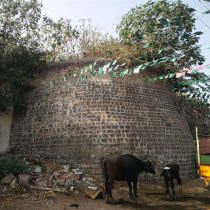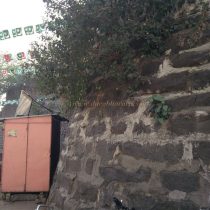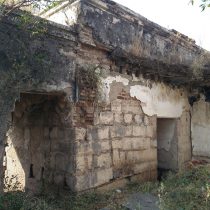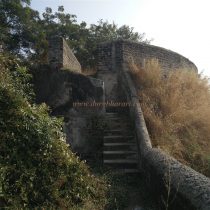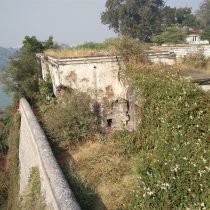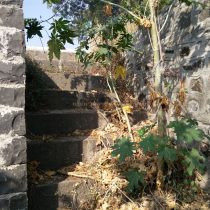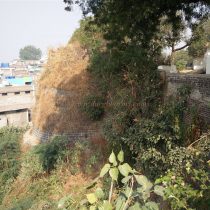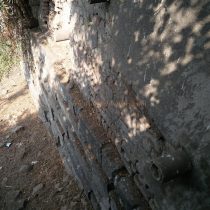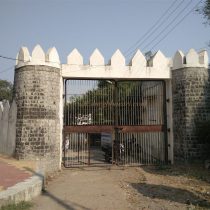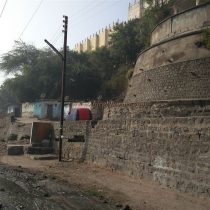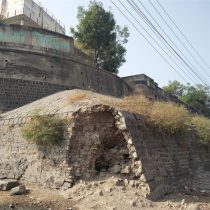NANDED/NANDDURG
TYPE : GROUND FORT
DISTRICT : NANDED
HEIGHT : 0
GRADE : EASY
Today, some forts in Maharashtra exist only for the sake of name and their remains are only for show. One of the many such forts is the fort of Nanded. Nandgiri fort was located on the north bank of the river Godavari in the city of Nanded. Today, there are some remnants of this fort in the old part of Nanded city in the Arab gully near the Godavari River. As the city of Nanded is connected to the rest of the country by road and railways, there are many transport options to get here. The fort can be reached from Nanded by rickshaw. According to the gazette records, the ground fort once had double ramparts with 24 bastions. Of these, 14 bastions were on the outer ramparts and 10 on the inner ramparts. Today, there are only 9 bastions left in the ramparts of the fort, out of which 5 bastions and ramparts of the fort can be seen from outside while the remaining 4 bastions can be seen from inside.
...
As you approach the two overhead water tanks built by the Nanded Municipal Corporation which could be seen from the Arab gully, you enter the present remains on the fort. At the place where you enter the fort, the Municipal Corporation has built two small cement bastions and an iron gate. This door is open from 9 am to 7 pm. Upon entering through this iron gate, the Archaeological Department has erected a panel giving information about the fort next to the water tanks in front of it. Although the fort is in the possession of the Archaeological Department, the Nanded Municipal Corporation has constructed two large water tanks to supply water to the city and also a rest house. Next to this path is a 15x12x10 feet long and deep cistern. During the reign of the Nizam of Hyderabad, the cisterns were constructed to supply water to the city of Nanded by drawing water from the Godavari river basin to this height and purifying it here. Now this cistern has become a fountain due to improper renovation. On the banks of the river, are some Nizam-era structures and their remains. The original structures of the fort and their remains have been used in the construction of these new structures. There is a bastion on the left side of the remains and another bastion on the lower right side of the remains. The upper part of the bastion is the highest part of the fort and from there you can see most of the fort and the River Godavari spread far and wide. The lower bastion has a cannon and the ramparts in this area are newly built of bricks. In the next part, there are the remaining two bastions of the fort, and the rest house is built next to these bastions. Below the first bastions are a cistern carved in the rock and a storehouse built of stone. Due to the large number of trees growing here, these structures are not easily noticed. This is where your fort round ends. It takes an hour to see the entire fort from the inside out. There is a tap for drinking water as there are water tanks on the fort. The city of Nanded, known in history as Nanditat, Nandinagar, Nandigram, etc., was founded by a king of the Nand dynasty. Paithan was the capital of the Nand dynasty in South India, while Nandahar and Navanandadera were its sub-capitals. The name of the city Nanded came from the word Nayanandadera. As Nanded is a sub-capital and a commercial center, it must have been surrounded by ramparts at that time for its protection. Nanded is a city fort and the city of Nanded was a major Buddhist center during the Satavahan period. It is mentioned in the letter on the stupa of Sanchi. After Wakataka, Nanded was an educational center and a glorious city during the Chalukya Rashtrakut. The fort belonged to the Bahamani, the Mughals, and the Nizam until independence.
© Suresh Nimbalkar

